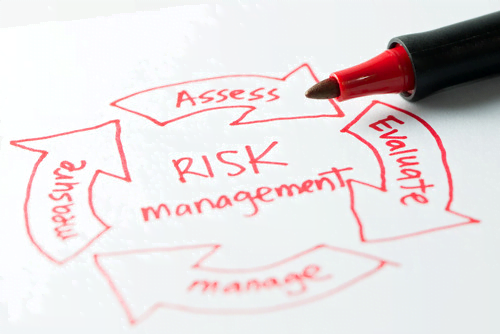Social Stock Exchanges
Summary
The launch of a Social Stock Exchange holds potential to channel greater capital towards social enterprises and non-profits addressing important social and environmental challenges in India. However– there are several considerations to ensure its effective functioning. Defining robust eligibility criteria for qualified organizations along with guidelines for mandatory disclosure of social performance data and outcomes achieved will be important to build investor confidence.
While the SSE may appeal more to impact investors, attracting sufficient trading volumes from both individual and institutional impact-oriented pools of capital merits focus. Listing social enterprises will also require capacity building support to strengthen their ability to measure, report and scale social value creation over time. Initial challenges around liquidity due to impact investors’ longer time horizons also require monitoring. With prudent guardrails and close oversight in the initial years – a Social Stock Exchange shows promise to optimize allocation of resources to further India’s developmental priorities.
Emergence of SSE
India is a large and diverse country facing various social challenges that can benefit from Social Stock Exchanges (SSEs). The government has recognized the importance of developing the social sector, as seen in the Union Budget announcement allocating regulatory oversight of SSEs to SEBI.
SSEs will provide social enterprises and non-profits a new avenue to raise public funds, increasing their visibility and ensuring transparency in capital mobilization and usage. India’s SSE aims to boost the social sector by listing operational non-profits working for 3+ years, spending over Rs. 50 lakh annually with Rs. 10 lakh in funding.
SSE fundraising rules will initially focus on zero-coupon bonds, mirroring regular stock exchanges. Tax benefits are also being evaluated. Importantly, funds raised will not count under CSR obligations to appeal to new impact investors.
SEBI’s regulatory framework provides credibility, intending to attract capital from HNIs and donors. The finance minister highlighted it is time Indian capital markets expand access and meet inclusive growth and financial inclusion goals. Nirmala Sitharaman goes on to say, “it is time to take our capital markets closer to the masses and meet various social welfare objectives related to inclusive growth and financial inclusion. I propose to initiate steps towards creating an electronic fund-raising platform – a social stock exchange – under the regulatory ambit of the Securities and Exchange Board of India (SEBI) for listing social enterprises and voluntary organizations working for the realization of a social welfare objective so that they can raise capital as equity, debt or as units like a mutual fund”.
Overall– a well-structured SSE could optimize allocation of resources and impact across sectors like healthcare, education and livelihoods, influencing existing systems and networks to further inclusive economic and social progress nationwide.
Regulatory Framework for Social Stock Exchanges in India
In July 2022 – the Securities Exchange Board of India (SEBI) came up with a comprehensive framework to regulate social stock exchanges in the country. This proposal provided an alternative avenue for social entrepreneurs to secure funding. SEBI defined a specific criterion that Nonprofit Organizations (NPOs) must meet for registration with the Social Stock Exchange (SSE) in its circular. The regulator also provided detailed disclosure requirements for NPOs issuing zero-coupon, zero-principal instruments– as well as annual disclosure obligations for those who are participating in SSE trading.
SEBI’s directives require NPOs listed on the SSE to furnish a report to the exchange within 45 days after the conclusion of each quarter, outlining the allocation of funds. Social enterprises using SSE for fundraising are additionally required to release an Annual Impact Report (AIR) within 90 days of the financial year-end. The AIR should incorporate both qualitative and quantitative aspects of the entity’s social and – if it is applicable – the financial impact resulting from the SSE-funded project or solution.
The SSE is open to NPOs and for-profit social enterprises that mainly focus on social intent and impact. Eligibility is demonstrated by a commitment to social objectives for underserved or disadvantaged individuals or communities. SEBI needed NPOs on SSE to annually reveal information about their top five donors or investors including – budget details, operational size, governance structure, financial statements, program-specific fund utilization, auditor reports and auditor details.
Benefits of Social Stock Exchanges
Providing the right incentives is important to mainstream impact investing and scale up social sector funding through mechanisms like Social Stock Exchanges. Several jurisdictions globally have introduced supportive policies that India could also evaluate.
For example – tax exemptions like deduction of investment amounts from taxable income could make impact investing relatively more attractive for HNIs and institutional investors. Regulatory clarifications around qualifying ‘program-related investments’ may allow foundations and charitable trusts to invest larger portions of their corpus for social outcomes.
Reducing regulatory hurdles, setting clear guidelines on qualifying investments and ensuring simple processes for tax benefits could nudge more investor classes to explore impact-first approaches. Standardizing ESG disclosure norms may also help investors assess non-financial returns more systematically.
If implemented prudently through pilot programs initially, such policy measures hold potential to catalyze individual and institutional capital channeling into social enterprises at scale. Over time– this could help strengthen India’s social sector ecosystem through a blended finance approach.
Conclusion
In short – the arrival of Social Stock Exchanges (SSEs) in India – guided by SEBI’s regulatory framework, underscores a commitment to social welfare and inclusive growth. SSEs provide transparent funding avenues, supported by a conducive ecosystem and initiatives like the Capacity Building Fund. The positive outlook, coupled with tax incentives, points to attracting diverse investors and aligning financial markets with impactful social development. India’s SSE journey signifies a transformative shift toward bridging financial goals with societal well-being.





























































You must be logged in to post a comment.